The abolition of slavery, formalised gender discrimination, apartheid and other reprehensible ways of being did not occur simply through continued niceness, writes Wamuwi Mbao.
22 October 1971 may have seemed quite an ordinary day for Ahmed Timol. He and a friend had set off that Friday night in a yellow Ford Anglia, bound for a party, when they were stopped at the top of Fuel Road in Coronationville. The police manning the roadblock were not looking for terrorists. They stopped him because he flagged their suspicion. Because he flagged their suspicion, he was searched. Because he was searched, they found materials (pamphlets and posters) they considered to be subversive.
From that night until the weekday morning six days later when he was thrown from the tenth floor of John Vorster Square, life continued to pass in an ordinary and unremarkable way for everyone except the family of Ahmed Timol. The fiction of the ordinary allowed everyone else to carry on as usual. While people were waking up, going to bed, playing golf, test driving their new car, celebrating birthdays, mowing their lawns, or doing small out-of-the-way things, in one of apartheid’s belligerent concrete landmarks a man was being tortured. Presumably there were some people going about their business on that day who saw or heard Timol clatter on to the pavement of Commissioner Street. Nobody came forward.
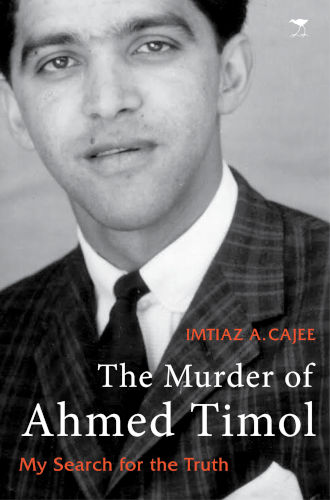
I began reading Imtiaz Cajee’s The Murder of Ahmed Timol while South Africa was restlessly dealing with a Covid-19 lockdown that resulted in an astonishing number of people dying from violence meted out to them by the police. A free press means that these deaths could not easily be suppressed or explained away in the callous manner that Timol’s killing was. As the controversy over how police were handling their duties simmered in South Africa, a stark absence of shrouding enabled the world to watch (not witness) the murder of George Floyd. Images and videos circulated, the outcry reverberated and gained momentum. It was singularly jarring to experience the piercing interruption of this brutal event amid the unfolding saga of catastrophe and death that has been 2020.
The policeman who choked the life from Floyd’s body and his fellow officers who looked on seemingly unperturbed did so because they felt fairly safe in the fact of their being police. That fact granted them a measure of power that has been possessed by the modern police force since its instantiation as a by-product of modernity at the turn of the twentieth century. Their power is the right to decide when someone is so dangerous that their life can be taken from them. Timol, by most accounts, was hardly a dangerous saboteur intent on slitting the throat of white South Africa. The subversive material he was caught with amounted to a few pamphlets and posters in support of an Anglican priest who was fasting on a mountain in Cape Town to protest against the death in detention of Imam Abdullah Haron. No poster has ever overthrown a government. It didn’t matter why he was arrested. The reasons are always trivial: a traffic stop also sealed Steve Biko’s fate. A casual traffic stop, as we have seen in numerous shaky video captures from the United States, has the potential to become something life ending very quickly.
After Timol’s murder, a desultorily convened commission declared that there was nobody to blame. The magistrate who presided over the sham concluded that Timol had committed suicide, and that before he died he had been treated in a civilised and humane manner. A court whose magistrates and judges were committed followers of apartheid, who conducted themselves as sycophants of the criminal regime, was always going to debase itself. In the landmark court judgement that reopened the case forty-two years later, Judge Billy Mothle said the following of these complicit functionaries: ‘These persons betrayed and demeaned their respective oaths of office by participating in inquest proceedings that became a sham; concealing the atrocities committed by the Security Branch and ensuring that the judicial system finds no one to blame.’ He rejected the evidence presented by the apartheid state in 1972 as a crude cover-up ‘conjured to conceal the truth’.
The debased tradition of police murdering civilians has a rich index in South Africa. Because the country itself is based on absurd violence, there is often a puzzled resignation before the absurdity of state-enacted murder. When the Marikana massacre took place in August 2012, you wouldn’t have had to go too far to find people expressing sentiments that boiled down to, ‘Yes it’s a pity, but what did they do to bring it about?’ We understand that policing operates in a particular way and so, when confronted with news about policing gone wrong, the default for many people is to assume that the glitch was caused by the victim. When Timol’s death was announced, the protests on university campuses and public calls for a commission of inquiry were quelled by a sham trial that brimmed with contemptuous lies. His is a story that could never be told while apartheid was present. It is a story that echoes through the stories of seventy-one other prisoners who died in police detention between 1963 and 1990—all under suspiciously opaque circumstances.

The man who was ostensibly the last person to see Timol alive, Joao Rodrigues, is captured in a police photograph of the room in which Timol was being held, standing with his back to the camera. Cajee’s description of him paints a picture of the banality of Special Branch:
taken from behind, it shows a man dressed in Afrikaner male fashion of the day: knee-length socks and a light-coloured safari suit with short pants. He was facing an open window. It was the window from which he claimed that my uncle jumped to his death.
Rodrigues has painted himself as a rank-and-file functionary of the secret police, someone who delivered salary cheques and other mail. Yet he is, according to his own story, someone who was trusted with the guarding of Timol. A conveniently vague witness, whose passivity in the photograph heavy-handedly pantomimes his lack of involvement. Rodrigues has maintained a version of the story that exonerates himself and his colleagues from any blame for Timol’s departure through the window. At the 2017 reopening of the investigation, Cajee describes his shock at the sight of the man who was attempting to evade scrutiny through claims of decrepitude:
The first time I saw Rodrigues in the flesh I was taken aback by his size. Nudging eighty years old and walking with a cane after a recent surgery, he showed no signs of a shuffle or a stoop. At 1.88 metres tall, he appeared just as fit, erect and strong as he did in the photograph, taken nearly fifty years before. I had had decades to ponder the events that took place in that room on the top floor of the security police headquarters in Johannesburg. I had imagined my uncle’s last moments over and over again. The bullying, humiliation, assault and, finally, the murder of my beloved uncle by hefty policemen.
Nobody applied for amnesty in connection with Timol’s murder. The policemen responsible for his death used to joke among themselves that ‘Indians can’t fly’. And yet when peace was brokered, they removed themselves, slipped into civvies, and were carelessly allowed to disappear into the post-apartheid scene. The distaste for recrimination that has presided in the years since 1994 has brought with it a concomitant reluctance to commit to the adjustments required for fundamentally changing the system. They even kept John Vorster Square, site of countless bludgeonings, electrocutions, and other artless forms of truth-extraction (many of which would later be excused with equal artlessness as suicide). The building was regarded as infrastructure rather than symbol, just as the methods and tactics of civilian suppression witnessed in South Africa during the Covid-19 pandemic are infrastructural retentions we are not supposed to pay attention to. When the army was called onto the streets to police the lockdown restrictions, they almost immediately began to demonstrate what they believed policing was. The viral videos of camo-clad oafs abusing and humiliating the populace—chasing people with whips, beating and kicking them—are clear evidence of the imaginatively deficient view of policing that continues to hold sway.
The past is buried when people dig in their heels and say ‘nothing will be gained from excavating and uncovering’. The brusque dismissal of calls for the past to be raked over is part of the pretence and delusion that apartheid disappeared with the arrival of the first Black government. But while many evasive figures expired in drooling denial without seeing justice for the crimes they authorised, others are still very much alive. They appear in public to demand apologies because they believe they have been calumnied. They lead foundations from which they issue historically revisionist falsehoods.
In the preface to his book, Cajee suggests, of the key witness in his uncle’s death:
I am mature enough to know that context is important and that Rodrigues was a minor player in an insidious and dirty war against black emancipation; it would have been very difficult for him to resist whatever instructions he was given to cover up my uncle’s murder. But that was then, and this is now. We’ve had more than two decades since the end of apartheid to recalibrate our positions on morality and justice.
Reading Cajee’s book during this time has drawn me into a complex consideration of the impact of structural racism in the wake of its exhausting and repetitive violence against Black people. In the hands of someone who has dedicated themselves to reassembling a hidden narrative, The Murder of Ahmed Timol jolts us back to the reality of a mode of violence that refuses to disappear. Timol’s story, in other words, provides a structure for thinking about what this moment might be saying to us. What continuities can be drawn from his death in apartheid Johannesburg to the murder of Eric Garner in New York City, or to the killing of Floyd in Minneapolis? Looking at the story of Timol’s death allows us to perceive a history of violence that has resisted fundamental change. It is a story that extends easily forwards in time to Marikana, or across to Britain, where Jimmy Mubenga died on a plane as he was held down by security guards. It is a story that extends to Breonna Taylor, shot dead by police in Kentucky in March. It is a story that stretches back to the death of Suliman Saloojee, rarely mentioned, or of David Oluwale in Leeds, now transformed into a symbol of urban regenerative glad-handing. Each is a single story, and each deserves its own telling. But what facts would you use to tell the story in a meaningful way?
Timol’s broken body is part of a story that is only partially visitable, and which slips ever further away from view. This is because there is a tendency, in many of these accounts, to be drawn back to the facts of physical destruction: the bruises on Timol’s body pathologists speculate were sustained before his earthward plunge, or the indignities Floyd’s body suffered during the eight minutes and forty-six seconds that the life was forced out of it. Telling these stories is doing the difficult work of looking beyond the individual cases while not ignoring that each instance is specific. When we identify the connections between things that seem to exist in no close relation to each other, we go some way towards making people understand that what they assume about the world is not the same for everyone.
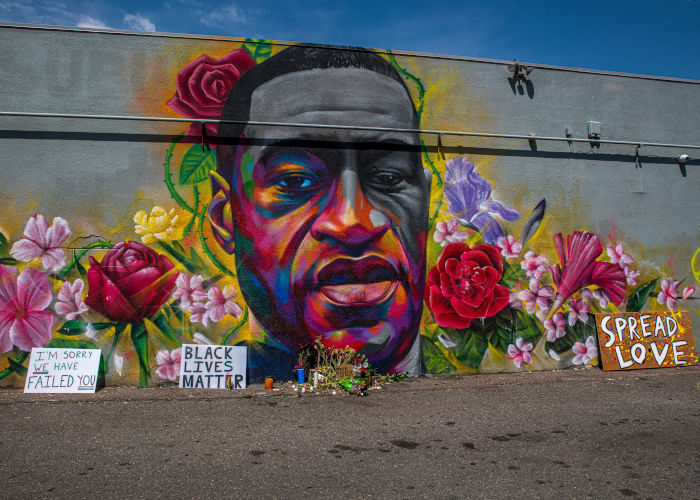
~~~
The modern police force is regarded as an end in itself. It glosses over its crimes as a necessary cost of doing business. That business is at best the imposition of the state’s will upon the people, at worst the propping up of a mendacious order whose wrongdoing is erased through systemically-induced, collective incuriousness. Marshall McLuhan’s truism—that ‘one thing about which fish know exactly nothing is water, since they have no anti-environment which would enable them to perceive the element they live in’—finds its doleful expression in the daily lives of those who absorb and accustom themselves to the depredations of the police because they know no other way of being. When confronted with calls to defund the police, many people will respond with alarm and the generalised feeling that such a call is unimaginable. It is not unimaginable, or even terribly impractical, to suggest that policing in its current format should be defunded. As calls to reorganise the world in a meaningful way proliferate, they are invariably met with the scandalised bleating of people who cannot imagine a world without the truncheon. The essential quality these bleaters demonstrate is the willingness to excuse monstrous behaviour as an aberration. They are fortified in their hallucinatory faith by the belief that the maiming and murder of some citizens (invariably the Black ones) by the police is an unavoidable consequence of good law keeping. Recall if you will that the rogue cop is a heroic convention in cinema that is immensely popular with middle-brow audiences; it’s a cherished commonplace that inverting the protect-and-serve mantra is all right if the ultimate aim is upheld.
Delusion and clumsy denial are the identifying traits of those who enjoy the benefits of police violence. The selfish fairytale that white South Africa has created is of a minor inconvenience that arrived in 1948 and cleared like some vagrant cloud in 1994. The selfish fairytale that white America has created is of a united country—united if you ignore the massacred Native Americans, united if you ignore slavery, united if you pretend that the beatings at Selma and Montgomery are ancient history. Collective amnesia, to borrow a term from Koleka Putuma, is an illness that does not confine itself to South Africa or the United States. Conservative talking heads in Britain mock British Black Lives Matter protesters, choosing to forget their own dubious record in this domain, including the case of Jean Charles de Menezes, who was shot eight times in 2009 (with seven of those hollow-point rounds entering his head) while pinned to the floor of a train by British police, who misidentified him as a terror suspect. Everywhere this cloud of convenient forgetting arrives, a certain group of people are firm in the conviction that the past is a field best left fallow. It suits some people not to hear these stories because they force an uncomfortable reckoning with the costs of a fantasy in which they are complicit. Their response is invariably white noise: counter-criticism, claims of empathy, empty gestures of solidarity, whataboutism, well-intentioned pleas of ignorance.
Disrupting a fantasy is never easy. People jealously hoard their belief in the sustainability of broken or outdated concepts. These concepts, as provided by the state, are crucial for the production and maintenance of certain kinds of comfort in the world; it tells us that wielders of order like the police are necessary for the creation and maintenance of peaceful society. This was how the apartheid state saw itself: as both an already-constituted reality and as a promised ideality waiting to be fulfilled. The police, according to this idea, perform a key function: to keep out what is negative, what threatens the peace, or what purports to disrupt or destroy the scene of pleasure.
I live in a part of Stellenbosch in the Western Cape that is inexorably being ground up by the regeneration industry. Old warehouses and derelict buildings are being bought and transformed into gin bars and other trinkets from the Nice Things catalogue. But the unseen threat of the area is its proximity to the Black township. We are part of the border between Black South Africa and the bit that seems to nurse a secret (or not-so-secret) pride in having been ‘kept nice’. Old streets. Dutch names on the buildings. Coffee shops. Streetside cafes. A vision of Europe in the African sun—a vision kept pristine through surveillance, visible policing, and what Hilton Als calls the ‘May I see your ID?’ syndrome.
This fantasy plays on the fears of white people who consider themselves reasonable, who would declare that they aren’t racist, but who see the police as a necessary institution for their safety. You find these people in neighbourhoods all over the world. Black people going about their private lives are routinely stopped by public or private police and asked to give account of themselves. Giving account means providing your reason for being there, at that time and in that place. It means that your presence has been flagged as suspicious, as potentially a threat to the safety of other people, or at least their possessions. In that moment, your safety and autonomy are in the hands of someone who has stopped you because they or someone else feels that you do not belong. I frequently drive or walk past these scenes of stopping, and each time the air is electric with threat. Is this invariably indigent, invariably Black person about to be pepper sprayed or slammed to the pavement? Are they about to be run out of town? Or will the performance of authority be enacted in some other devastating way I or someone else will later recount in disbelief to someone else who will in turn express their disbelief, or dissemble and invoke the problems of homelessness and crime?
The uprisings that have been rattling US cities in the weeks following Floyd’s death have meant it is no longer possible for white voices to drown out protest with white noise. Puzzlingly, many of these white voices feel it is impertinent to make demands on the police. To judge from their querulous objections, they would prefer that such outrage, when it does occur, be acknowledged only as an aberration, and then pushed away from the collective consciousness. The smugness with which they insist that they as a collective population are better than their predecessors were at judging ‘the common good’ is the result of wilful self-deceit. This deceit proposes the consolation of meaningless bromides and empty feel-good gestures. In South Africa, this manifests as a preference for activism in the form of the earnest sing-along. They want supermarkets to tell us ‘we’re all standing together’, and other things that assert the old lie that we are all alike. These people are akin to James Baldwin’s monsters, who insist on remaining in a state of innocence long after that innocence is dead.
What we do know is that the abolition of slavery, formalised gender discrimination, apartheid and other reprehensible ways of being did not occur simply through continued niceness. If the still-veiled crimes of the apartheid regime have taught us anything, it is that faith in the repeatedly disproved fiction of ‘good people, bad apples’ is dangerous. Under the guise of togetherness, perfectly rank-and-file members of society are able to commit terrible crimes, and they are able to evade justice while hiding behind that guise as well. No doubt the policemen responsible for the many Black deaths in the US have spouses, enjoy the occasional barbecue, and are fans of sports. This means that their place in society and their right to be judged and excused as individuals, so the dubious wisdom goes, is inviolable.
But the lesson to be borne away from the past two decades of increasingly visible anti-discrimination protest, is that no safe passage can be granted to nostalgic ideas. Nostalgia tells us that not all men perpetrate crimes against women, that not all white people are racist, that all lives matter. But these (including that last vulgarity) are social fictions meant to console people who do not want to do the difficult work of disentangling themselves from systems of privilege. It says ‘we would not do that if we were in that situation’, without ever stopping to consider that the existence of the situation itself is the problem.
The police are not some miraculous force owing responsibility to nobody but themselves. They are the creation of a dated model of social control. We accept the style of law enforcement as a necessary corollary of the function of law enforcement, as long as we can be suitably convinced that the shootings and asphyxiations are rare instances. When you consign things to the zone of the tragedy and the ‘regrettable incident’, you need no longer discuss them as problems with real agents underpinning them. When that discussion is derailed, or stopped, we don’t reach the critical point of understanding how to commit ourselves and our resources to confronting the state in a clear and compelling way.
Few people would openly admit that they think it normal for the state to murder its own citizens. But many people are willing to be part of a preposterous social compact according to which the state may employ its distended weapons upon uncooperative Black people. Just what being uncooperative means is for the state to decide. You may be shot for being Black on a Sunday afternoon. You may be strangled, like Eric Garner, for standing on a street corner. You may be shot, like Breonna Taylor, because a policeman misidentified you as a suspect. You may be killed, like Collins Khosa, because you were outside your house. You may be killed, like Trayvon Martin, because a white person decided that your being in the same public space posed a threat to their safety. There is always a narrative to explain why you are being killed.
It confounds me, then, when I watch footage of police teargassing demonstrators, driving SUVs threateningly into crowds, firing rubber bullets, and arresting those reporting these crimes. What is the narrative for this behaviour? What is the narrative for agreeing with it, or commending it as necessary? The monstrous behaviour of the US police defies the imposition of any kind of narrative line. Their actions defy the logic of the social news cycle, according to which problems present themselves in terms of events where, once certain frames are established (the event, its interpretation), it can be rendered legible. Imagine a film in which all the police are rogue.
I find myself dissatisfied by explanations at precisely the point where there is an upswing in material that seeks to interpret what is happening to those who say they were not aware, or not sufficiently aware. A bizarre side-effect of life in the age of lists and algorithms has been the speed with which reading lists, playlists and viewing lists have appeared on our feeds, walls, online shopping portals and streaming services. Who is this for? Who needed to have their understanding of what is going on set to a Spotify playlist, as though protests and calls for justice are a mood and a genre to be consumed while making dinner? And when these things are wiped away by the refresh cycle, what happens next?
This is a question about what knowing enables. For those of us who are not protesting on the streets, the life of an event is measured in algorithmic time. Here, ‘wokeness’, the quality of being socially aware, has done little to change the time cycle through which we understand bad things. Wokeness is meant to give context to an event so that you understand that Floyd’s murder isn’t a once-off somewhere far away. But the danger of this kind of political awareness is that it presents problems when, once certain frames for understanding the event are established, it can be rendered legible and consumed. Thus, in the month of June, the discussion that has tended to dominate on social media is one around solutions. Solutions-based thinking delaminates single events from their context and makes them into teachable lessons. When situations are turned into genres, we are able to temporalise them, to make them end or resolve. We hear that something has happened. And then we observe key scenes—a salvific denunciation via comedic philippic by Trevor Noah or John Oliver; the arrest and charging of police officers; and so on—and some part of us believes the world is restored to normalcy, and we allow ourselves to think about other things.
The state is forever trying to rally us towards collective modes of non-engagement, in which guise we might be corralled away from constructive modes of social outrage and towards revisionist forms of collective attention absorption. Donald Trump, the epigone of some ghostly strongman figure, acted as though Floyd’s murder was a minor annoyance. He denied it attention while threatening those who had taken to the streets with violence and recrimination. In doing this, he was simply reading from the script given to all aspirant strongmen, who turn a blind eye to what displeases them. The boorish mendaciousness of Trump, a dim leader who finds populist expression in exhorting his followers not to think, was on full display, as it inevitably would be. His administration is an unchanging exercise in self-celebration, and it is at moments like this one where its peculiar mix of vanity and banality is highlighted. Trump bobbed odiously in the bowl of public commentary, tweeting helpful, racist nothings like ‘when the looting starts, the shooting starts’. He was merely exemplifying a kind of sitcom-dad logic that is popular with a great many white people in the US (and South Africa as well): a logic of ‘you get what you deserve’, a logic that equates Black life with shopfront windows and carry-away goods.
The audience to whom this logic is primarily directed is not, as you might imagine, the slack-jawed, mouth-breathing, white small-town stereotype. Trump and his mouthpieces are speaking past the cheap seats, to the white people for whom thresholds like ‘Political Correctness Has Gone Too Far’ and ‘Yes, but …’ are deeply-held totems. Their scepticism neither began with nor depends on Trump. Like young white South Africans who exhibit racist behaviour, these Americans have been fed a diet of all-you-can-eat patriotism, and bottomless inchoate resentments directed at a world they no longer have sole authorship of. These impressionables are to be found in all the comments sections, below every blacked-out Instagram window, shrilly deploring the attacks on buildings, statues, public space and (naturally) the police. They neglect to deplore the crime that sparked off these protests because they are not actually interested in any discussion that seeks to hold the police accountable. They feel themselves betrayed by recent history, and so they root for those they perceive to be the underdogs—namely, themselves. They wish fervently that the past would go away and leave them be.
~~~
At the same time that the world was being galvanised into action, or the performance of taking action, in the wake of Floyd’s death, a quiet announcement was issued here in South Africa by the National Prosecuting Authority. It stated that it would not be pursuing charges against the two surviving Special Branch policemen who were implicated in Ahmed Timol’s murder. In its statement, the NPA claimed its decision was motivated by the burden of having to prove that the evidence the two policemen gave was intentionally false. The spokesperson who delivered this appalling news further stated that the advanced age of the two retired policemen was a stumbling block to any further attempts to bring the truth of Timol’s death to light.
The seeming uninterest in waking sleeping dogs no doubt has some grounding in the absence of evidence. Many of the worst crimes of the old regime will never be known. Like many debased regimes who reached their end before they had quite expected to, the apartheid government fed tons of its own records into incinerators and furnaces. But the recuperation of Timol’s story is not simply a project of truth bringing. It is also about making people who have been abstracted by violence into individual selves once more.
There is, it should be said, precedent for holding old people to account. Twenty years ago, the surviving conspirators in the 16th Street Baptist Church bombing in Birmingham, Alabama, were put on trial and convicted for the crimes they had committed in 1963. More recently, the Nazi SS guard Bruno Dey was brought before a court in 2019 to face 5,230 counts (that’s ‘five thousand two hundred thirty counts’) of being an accessory to murder. These actions are not, as some would have it, too little too late. They are in fact profoundly necessary tributes to the suffering of those whose voices were violently silenced. They strike a blow against the death-dealing regimes, and against those who would regard us as being past the reach of inconvenient truths. For the South African state to decline to prosecute is bizarre, unconscionable even—especially at a time when events in the world compel us to think more expansively.
It is a sullying obscenity to suggest that those who are in some way responsible for egregious crimes ought to be given a free pass on account of advanced years. It creates a falsehood by association: that since the criminals are old and vanished from public scrutiny, their crimes are similarly derelict. Our response to societal crime is the evidence by which future generations will judge us. When we look at footage of incensed white Americans spitting on civil rights activists, or when we look at footage of apartheid policemen terrorising Black people with dogs and Casspirs and sjamboks, we experience the horror of the absurd. Surely, we say, these people cannot be serious? But this is an exculpatory fob, a shrug and a raise of the shoulders as the cameras fade to black. The enormity and extent of apartheid criminality finds a mirror in the abuse of Black lives in America, perpetrated in the name of the great American fiction. Both of these things will continue to haunt the present, because they are still a part of it.
- Wamuwi Mbao is an essayist, cultural critic and academic at Stellenbosch University. Follow him on Twitter.

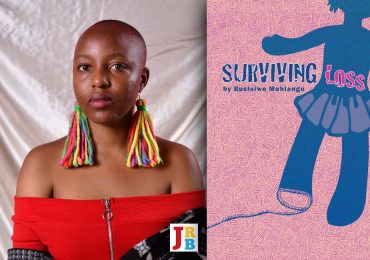
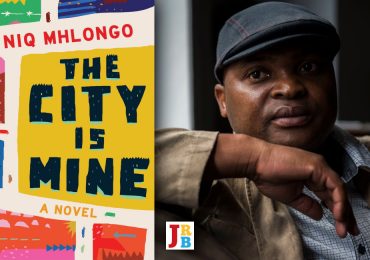

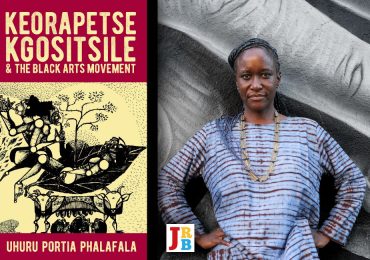
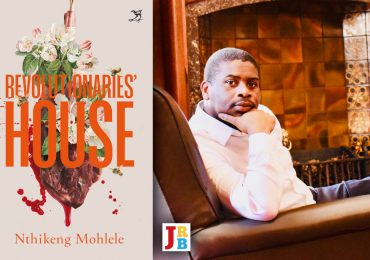
One thought on “What continuities can be drawn from the murder of Ahmed Timol in apartheid Joburg to the killing of George Floyd in Minneapolis? Wamuwi Mbao unpacks the debased tradition of police murdering civilians”